Spanish tech tree for World of Tanks proposal by PikPikker
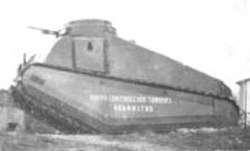
"The Republican Behemoth"
- 11/11 HP
- 30/47 mm
- 6/6/6 mm
- 85 hp
The “Tanque Barbastro” is an unofficial name for a handcrafted tank built by local (not government) initiative early in Spanish Civil War. The first and only completed tank was an improvised design, but production of several more was sanctioned when the project was raised with government officials. Large in size, but poorly armed, poorly armored, and suffering from a bureaucratic mess, their combat value, if any even saw combat, was probably limited. There are only two known photos of the mysterious prototype tank, and all four vehicles have an unknown fate; but they were all likely scrapped before the war’s end.


- 6/6 HP
- 30/42 mm
- 47/47/62 HP
- 51/88/23 mm
- 10/10/10 mm
- 15/15/15 mm
- 90 hp
- 135 hp
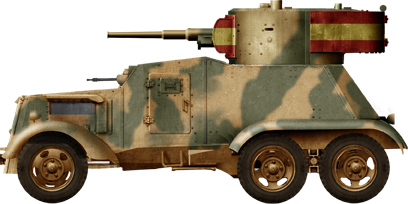
The Hispano Suiza MC-36 was a truck-based, little-known vehicle from the Spanish Second Republic. It was actually only a prototype vehicle, and was intended to see service with the security forces, but it lost out on the contract to the smaller Bilbao armored car.
It was based on the very large Hispano Suiza T-69 truck chassis. Hispano Suiza was a Spanish engineering firm founded in 1904, which, among other things, made luxury cars and commercial trucks. The Republican government took control of the Spanish side of the company during the Civil War in order to produce weapons, armored cars, and other vehicles. Similarly, it also had a French subsidiary which was taken under control by the French government in 1937 (by owning 51% of the shares) for the same reason – war-material production. However, the MC-36 was actually a pre-Civil War armored car, which was in direct competition with the Bilbao to be produced for the Republic’s security forces – probably the Assault Guard or Police.
They were reportedly built in Barcelona, with the hulls made in Madrid by La Sociedad Comercial de Hierros. It ultimately lost the competition, perhaps due to the Bilbao’s simpler design and smaller size. The MC-36 looks as though it would have been very unwieldy in urban combat – a rough estimate based on a scale model reveals it to be 7.4 meters long, which could make traversing around narrow streets an issue.
An estimated 5-15 vehicles were built (probably closer to 5), and were committed to combat in the Civil War with Republican forces. They were most likely sent to the southern front, with unknown combat results. Interestingly, the T-69 truck was used for towing field guns and artillery pieces during the Civil War, but there is a substantial lack of information on them.
More is perhaps known about their service with the Nationalists. According to slogans on the side of one vehicle, they were in service under Lieutenant Colonel Carlos Asensio Cabanillas (hence the slogan: “Columna Madrid, Tte. Coronel Asensio“). Assuming that this is more than just a slogan, these MC-36s were captured somewhere between Seville and Madrid, as this is where Cabanillas’ forces saw combat.
The Nationalists also did one huge modification – adding a T-26 turret to at least one. It is unknown why this was done, and if only one was modified in this manner. It was, reportedly, the command vehicle for “Agrupacion de Carros del Sur“. The Nationalists would have quite liked to operate a captured T-26, seeing as though they were easily the best tanks in the war, owing to their deadly 45 mm (1.77 in) gun. Perhaps the T-26 it came from was damaged, save for the turret, and this is why the turret was salvaged and placed onto a suitable chassis. Whilst quite a heavy turret (an estimated 0.94 tons), the chassis would be able to carry such a load, although it would raise the center of mass substantially, thus making it top heavy and more prone to toppling over. The MC-36 with a T-26 turret has been photographed in service with Agrupacion del Ejercito del Sur during the Victory Parade in Seville, 17th April, 1936, and again in Andalucia.
Hispano-Suiza MC-36 with its original turret:
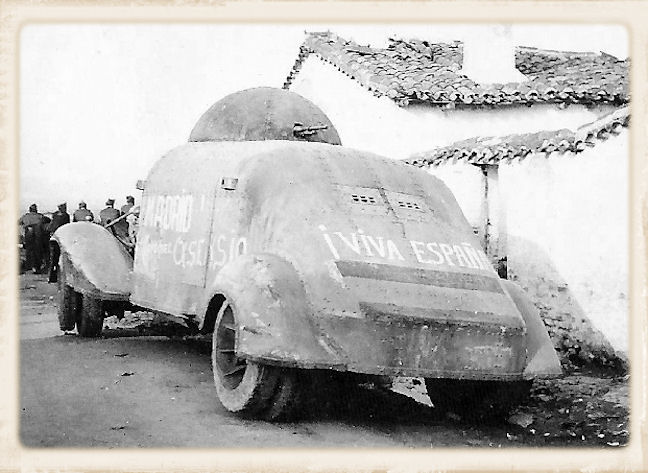

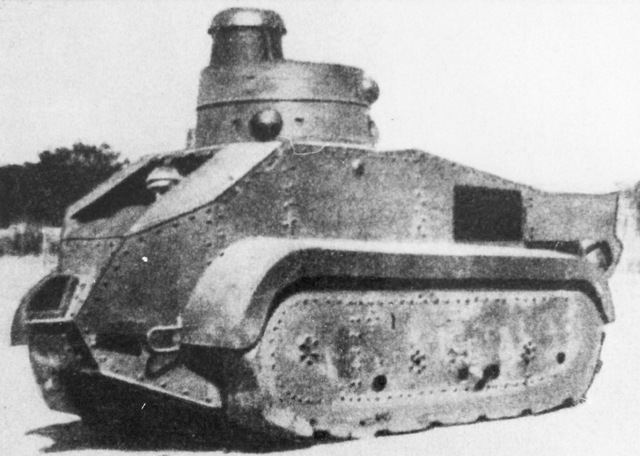
- 6/6 HP
- 20/28 mm
- 6/6 HP
- 21/30 mm
- 6/6 HP
- 23/33 mm
- 47/47/62 HP
- 51/88/23 mm
- 10/10/10 mm
- 15/15/15 mm
- 73 hp

The UNL-35 was perhaps the most mass-produced armored vehicle in Spain during the 1936-1939 Civil War. Built by Unión Naval de Levante, it was essentially a better copy of the Soviet BA-20, owing to its use of a truck chassis, as opposed to a saloon car. It is sometimes suggested that the UNL-35 is a Spanish copy of the FAI, which makes sense, as FAIs were actually sent to Spain. However, the UNL-35 seems to have more in common with the BA-20. The easiest way to tell them apart from a BA-20 is the four-piece wheel guards, the differently-shaped turret, and the Spanish scenery in the background of photos. Sturdy, reliable, sensible, the UNL-35 was kept in service with the Spanish army until retirement in 1957, but also may have seen service in WWII with the French and even the Germans. 120-200 vehicles built.


- 30/30/36 HP
- 46/67/18 mm
- 47/47/62 HP
- 70/98/23 mm
- 8/8/8 mm
- 15/15/15 mm
- 78 hp
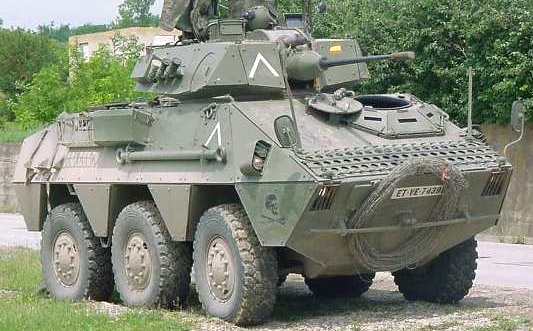
The AAC-1937 (Autometralladora blindado medio Chevrolet-1937), sometimes known as the “Chevrolet 6×4 1937”, was an armored car made by the Republican forces in Spain during the Civil War. It was, essentially, a copy BA-3/6 (although it closely resembles a BAI).
Its armament varied quite a bit – usually two machine guns (various models), but sometimes a French 37 mm (1.46 in) gun, and even cannibalized Soviet turrets with 45 mm (1.77 in) guns were used. Like many AFVs in the Spanish Civil War, it changed hands quite a lot, and saw service with Republicans, Nationalists, and even with the French and Germans during WWII. With such an impressive list of users, it seems odd that it is such an obscurity.
By 1937, the German and Italian navies had control of, or were blockading, all Spanish ports, meaning that the USSR could not supply more tanks and armored cars to the Republicans. Knowing this, the Republican government turned to local industry to produced AFVs.
There was, apparently, a specification for a heavy armored car, and a number of prototype armored cars were made in April, 1937, generally based on the BA-6 design. One which the Republicans liked the most was a prototype of the AAC-1937. It was based on a Chevrolet SD 1937 lorry chassis, and produced at the General Motors Factory in Barcelona.
AAC-1937s, in their various models, started leaving production lines in April 1937. Four were made every month, but by March, 1938, there was a shortage of steel armor plates as a result of the Nationalists dividing Republican held territory in two. Small numbers were made until February, 1939, when Catalonia was captured by Nationalists. A reported 70 were built in total, but perhaps as many as 90, according to combat data.

AT guns instead of Hotchkiss machine gun were supposed to be installed. There were no specific guns, so anything of that period can be placed (if it's not too big for the vehicle).
- 45/45/60 HP
- 70/125/23 mm
- 43 hp
It was planned in 1937 and the first prototype was completed in 1937. Unknown number built. In 1937, the Commission of the military industry (Comision de Industrias de Guerra – IGC) reviewed a draft of armored tracked vehicles, and eventually commissioned “Maquinaria Moderna para Construcciones y Obras Publicas, SAE”, located in the Catalan town of San Sadurní de Noya. The project manager was Casanova, who used the multi-purpose Benach tractor as a basis. Since the tractor chassis was marginally suitable for combat adaptation, many components and assemblies had to be developed from scratch.
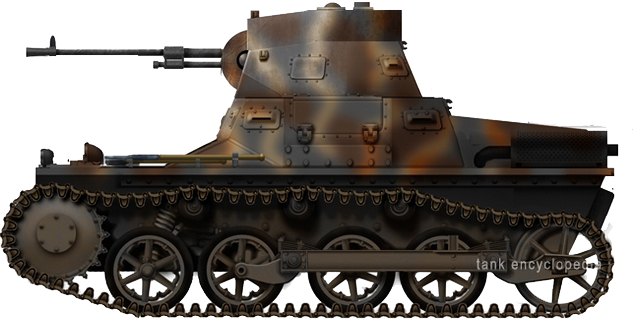
- 11/11 HP
- 38/49 mm
- 12 rounds
- 13/13/13 mm
- 100 hp
Panzers I were sent to Spain (Nationalists) in 1936 from Germany because of Civil War. The main problem was that Pz. I's couldn't fight rebulicans' T-26s because of the weak machinegun and thin armor. To increase Pz. I's firepower there were different variants. For example one of the tanks got the 20 mm Breda gun, the upper turret section was made higher a bit and with open top to place the gun. There's no info about its use, but usual production Pz. I's were in service up to 40s.

- 11/11 HP
- 38/49 mm
- 12 rounds
- 100 hp
The Carro de Combate de Infanteria Tipo 1937, or infantry Combat Tank type 1937, was a Spanish prototype built by the naval base at Sestao for the Nationalist Forces. Only one prototype was made, armed with an Italian Breda 20 mm (0.79 in) autocannon and twin Hotchkiss light machine guns in the hull. The complete drivetrain (front drive sprockets, rear idlers, bogies, suspension and roadwheels, even tracks, were directly taken from the Italian CV 33/35 tankette and modified, stretched out for the bogie main support. However, the hull was not much longer, but it was higher, in order to fit a two-man turret (for a total crew of four, including the driver and hull gunner). The prototype exceeded all field test expectations (overcoming trenches, climbing walls…) and all mechanical and armament requirements also. Mass production was so close that reports already mentioned a first batch order for 30 units. However, a single, but important flaw was discovered: the poor quality armor could not withstand even 7.92 mm (0.31 in) bullet fire. Therefore, the project was cancelled and the chassis was converted into an artillery tractor now exhibited in Toledo. To make matters worse, Italy thought this model was a CV 33 rip-off and a settlement was asked for unauthorized licence production.
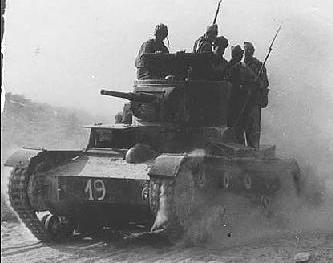
I just took the image of a serial republicans' T-26, but RT-1 seemed to look almost the same.
- 47/47/62 HP
- 51/88/23 mm
- 15/15/15 mm
- 90 hp
Not much is known nowadays. RT-1 supposed to be a T-26 clone made by republicans. So, there's no info if it did differ or not. However there were imported T-26's in the republican ground forces.

- 6/6 HP
- 21/30 mm
- 45/45/60 HP
- 39/65/23 mm
- 18/18/18 mm
- 75 hp
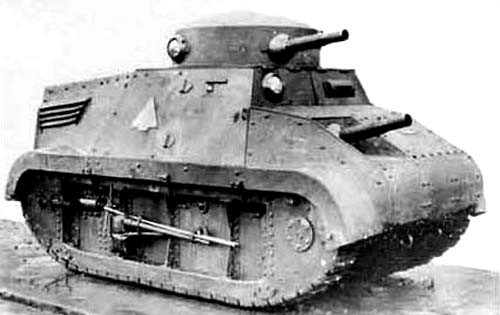

The Trubia Modelo 1925 was developed by the Fabrica de Artilleria Trubia in Asturia, in the industrial north of Spain. The hull was made of bolted 18 mm (0.7 in) armored plates over a steel frame, like the original Renault, and roughly the same dimensions and configuration. The first of this new prototype pre-series (four were ordered) was built in 1928 and passed all tests successfully at the Firing School. The second one was ready in 1931, followed by the two others in 1934. The latter three were issued to the Milan Infantry Regiment, in Oviedo, for field exercises and trials, while the first A4 returned to the factory in 1935, for repairs and modernization.
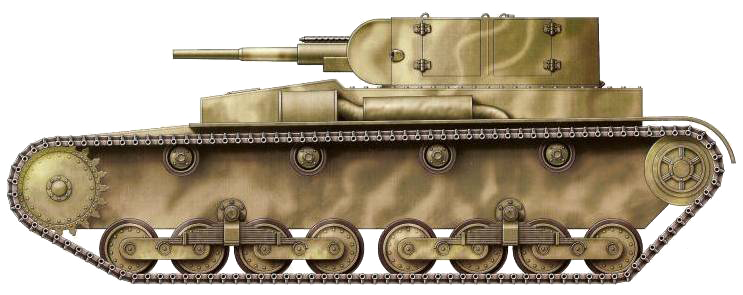
- 47/47/62 HP
- 51/88/23 mm
- 7-15 mm
- 85 hp
On 6 September 1937, Captain Félix Verdeja, commanding the maintenance company of the Nationalist Batallón de Carros de Combate ("Tank Battalion"), began to privately develop a new light tank. His position, with direct access to Panzer Is and T-26s, gave Verdeja direct evidence of the shortcomings of current tank models in terms of combat ability and maintenance issues. Although the project was approved, the program had to use scrap to build the first prototype due to a lack of resources and money. Despite early obstacles, including criticism from von Thoma, the program continued and Verdeja was awarded a warehouse in Zaragoza to continue with the construction of the prototype. The prototype was manufactured from spare parts and equipment scavenged from other light tanks. Following the prototype's success in testing between 10 January and 20 January 1939, Captain Verdeja was ordered to begin construction of the definitive model of the light tank.
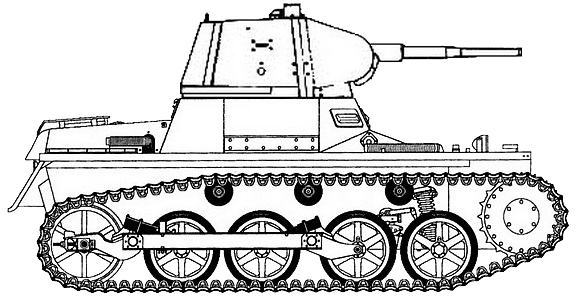
It's fictional name, but that's only because the upgunned Pz. I project didn't have a name (or at least we don't know it).
- 47/47/62 HP
- 51/88/23 mm
- 40/40/45 HP
- 60/100/18 mm
- 50-100 rpm
- 15/15/15 mm
- 60 hp
- 100 hp
In late 1938, Panzer I was sent to the Armament Factory of Seville in order to mount a 45 mm gun, captured from a Soviet tank (a T-26 or BT-5). A second was sent sometime later in order to exchange the original armament for a 37-millimeter McClean anti-tank gun, which had been deployed to Asturias in late 1936 on the Soviet ship A. Andreiev. It remains unknown to what extent these trials and adaptations were completed, although it is safe to assume neither adaptation was successful beyond the drawing board.


- 7/7 HP
- 25/34 mm
- 45/45/60 HP
- 45/75/23 mm
- 47/47/62 HP
- 60/90/23 mm
- 6-16 mm
- 70 hp

Plans of the Trubia were handed over - thanks to Captain Ignacio Larrea, who headed the project - in Republican-held Sestao, near Bilbao. A new production run was quickly authorized by the autonomous government of the Basque country, based on the Landesa tractor, as the “Carro ligero Trubia naval modelo 1936” or M36 (built by the Spanish Shipbuilding company of Sestao). It is sometimes known as the “Euzkadi” (“Basque” in basque language). The vehicles, often compared to “toy tanks”, were quite small, but retained a crew of three. They were deprived of their steering tail and had a one-stage simplified turret. The armament consisted of two Vickers machine guns, one in the hull, used by the driver and the other in the turret. They were not compartmented, and the engine was so hot and noisy (the ventilation system proved inadequate at best) that it is said that the already crouched crew could not bear it for more than thirty minutes inside. Plus, the vehicles were underpowered, had a bumpy, rough ride (no suspensions) and were utterly slow. Armor varied from 6 to 16 mm (0.24-0.63 in), with a first level of 3 mm and 13 mm (0.12/0.51 in) armor plates bolted over with a gap of 25 mm (0.98 in). The overall weight was 5 tons. The series was initiated in 1936 and ended in 1937. Little is known about their total production, numbers ranging from 15 to 20 or even 30 or more depending on the source. The confusion with the four Trubia 75hp prototypes adds to the uncertainty. Exact records disappeared. They saw combat but were more intended as local morale boosters rather than for long wartime operations.
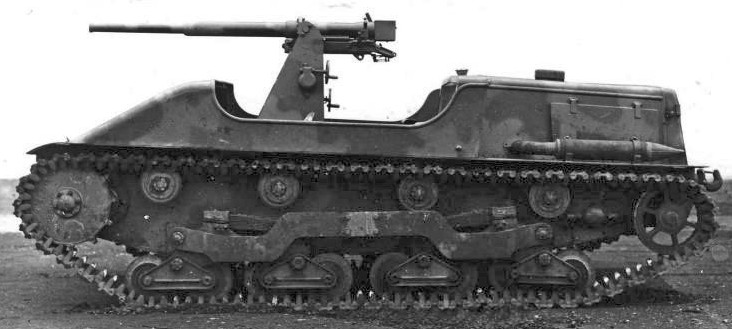
20-K is the only truly historical gun. Other guns may be installed as Spanish army just didn't have more suitable guns for this SPG.
- 47/47/62 HP
- 51/88/23 mm
- 80 hp
M50 was a Francists' SPG prototype based on the C.C.I. tank, built in 1937. SECN Sestao engineers decided to combine a light tank with the Soviet canon - there were spare 45 mm guns from imported T-26's, BT-5's and BA-6's. The main problem of usage was that the gun totally wasn't protected, but that's why it had a 360 degrees traverse - that's why the SPG didn't enter the service (though tests in early 1938 was successful). Then M50 was rebuilt into an artillery tractor and served the army for a year.


- 47/47/62 HP
- 51/88/23 mm
- 55/55/70 HP
- 80/130/25 mm
- 175/110 HP
- 38/83 mm
- 7-16 mm
- 7-25 mm
- 85 hp
- 120 hp

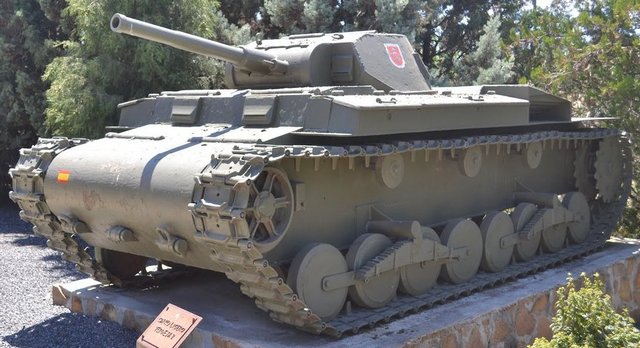
The appearance of the resulting Verdeja 1 prototype was close to that originally envisioned in Captain Verdeja's first designs. The vehicle's hull was elongated and the rear plate sloped, while the fuel capacity—and thus combat range—was increased, as was the ammunition capacity and the thickness of the armor. The vehicle was fabricated in Bilbao, the only city in Spain with a heavy vehicle assembly line. Due to the end of the Spanish Civil War and a shortage of funds, construction was postponed until May 1940. The prototype was completed three months later and delivered to the proving grounds in Carabanchel, Madrid, powered with basically the same Ford flathead V8 engine also used as the motive power of the three-tonne weight British Universal Carrier. A major external difference between the previous model and this prototype was the new, low-profile turret which allowed the 45 millimetre gun to depress and elevate from 8° to 70°. The original 45 millimetre model 1932 gun was exchanged with a new 45 millimetre Mark I tank gun fabricated by S.A. Placencia de las Armas, in Spain. However, the new prototype adopted the suspension and tracks from the original prototype. In essence, the main advantages of the new prototype were its low-profile, high elevation of the main gun and the increased sloping of the armor from 12° to 45°. It should be noted that the Verdeja 1 retained the original configuration by placing the engine in the front, to increase crew survivability. Testing against T-26B shown that Verdeja tank was definitely better by the most of parameters. Plans to produce one thousand Verdeja tanks were approved on 2 December 1940, divided into ten batches of one hundred tanks each. The Verdeja production prototype was to adopt the 120 horsepower (89 kW) Lincoln-Zephyr gasoline V12 engine, requiring a contract between the Spanish government and Ford Motor Ibérica, Ford's Spanish subsidiary. Simultaneously, in case of failure of talks between Ford and Spain, the government also began to contact a number of German companies, including Maybach. In order to begin production, the Tank Workshop in Zaragoza was to be expanded to allow final assembly of at least five tanks per month. Despite funding and two years of construction allotted, the factory construction and expansion was never completed. Other problems arose, including the failure to reach an agreement with Ford or Maybach. These factors, the poor economic situation in Spain, the lack of clients other than the Spanish Army and the lack of incentives for Spanish companies to partake in the construction program, led to the abandonment of the attempt to fabricate the Verdeja 1. Another attempt was undertaken at contracting the ADESA (Armamento de Aviación, S.A.) company, to manufacture two Verdeja light tanks for experimental purposes. Despite the failure to procure an engine, ADESA offered to construct 300 units, but these attempts failed and the program was abandoned by 1941.


- 55/55/70 HP
- 80/130/25 mm
- 175/110 HP
- 38/83 mm
- 10-40 mm
- 120 hp
- 140 hp
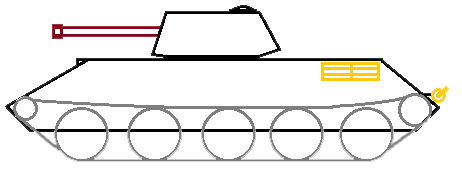
As the Verdeja 1 program dissolved, Captain Verdeja began to design a successor taking into consideration lessons learned during the opening campaigns of the Second World War. The new design featured a redesigned engine bay at the rear of the chassis, which meant moving the drive sprocket to the rear as well. The movement of the engine's location allowed for better cooling of the vehicle's motor and the fighting compartment, as well as allowing the turret to be moved forward. The vehicle's armor was also increased substantially by between five and ten millimetres. This new tank was not approved for production or further development due to continued postponement of the production of the Verdeja 1 for reasons which included offers by the German government to supply the Panzer IV's engine for the Verdeja 1. Although production of the new vehicle finally began in 1942, it was not until August 1944 that the Verdeja 2 prototype was delivered. The program was delayed by the incorporation of twenty Panzer IV Ausf. H's and ten Sturmgeschütz IIIs into the Spanish Army in late 1943, as well as failed attempts to procure one hundred more Panzer IVs and even Panthers and Tigers during 1944. With these new vehicles integrated into the army and the fiscal problems which plagued the Verdeja 1, the Verdeja 2 remained unimproved until 1950, when there was an attempt to fit a Pegaso Z-202 engine. Despite this, the Verdeja remained on factory grounds until 1973, when it was transferred to the Infantry Academy of Toledo.
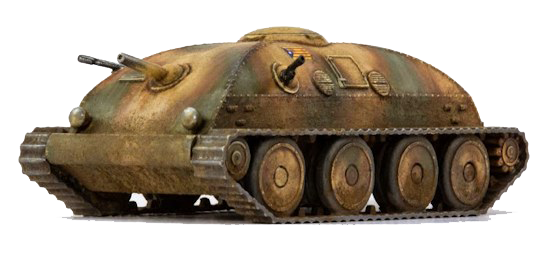
I feel pretty unsure about the guns for this. No define cannons were projected for the tank, but also no import guns can be installed (the proposal was done before the Civil War). I leave 40 mm Arellano gun here, but sure something else can be added.
- 45/45/60 HP
- 70/125/23 mm
Almost nothing is known. This is a project of turretless light tank from 1935 based on Christie suspension. Supposed to reach high speeds. Also this tank could move without tracks (with the 4 wheels on corners).
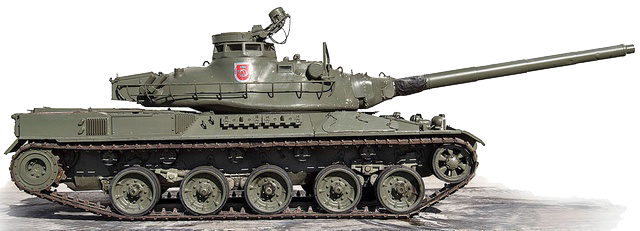
The fastest of the Spanish AMX-30 versions - P-007 version suggested installing MTU-833 engine producing 850 hp.
- 390/390/480 HP
- 248/300/53 mm
- 80/35/30 mm
- 850 hp
Starting with ~1970 when Spain bought 19 (first 6 delivered in November 1970) AMX-30 tanks from France to replace their ageing fleet of US tanks like the M.41 and M.47. The US and UK had suspended sales of equipment to Spain for political reasons and – as the gun on the Leopard 1 was British – the Germans couldn’t sell the Leopard to Spain at the time. So, Spain had basically had a choice of either the AMX-30 or Leopard 1 and then been forced to take the AMX-30 by the Leopard 1 being unavailable. To say they were renowned for reliability would be a mistake, basically they were terrible, horrible breakdowns and maintenance to such an extent that they not only started to improve the old and ‘replaced’ fleet of M47 and M48 tanks, but with modifications to improve the AMX-30, which in turn led to the Lince tank project. There were 9 different prototypes (from P-001 to P-009) with different engines and transmissions.


- 110/110/175 HP
- 100/140/38 mm
- 350/410 HP
- 102/53 mm
- 120 hp

One of the most successful programs among other SPGs projects was the attempt to produce a 75-millimeter self-propelled howitzer based on the chassis of the Verdeja 1 prototype. Beginning in 1945, now-Major Verdeja was ordered to begin designing this piece using a rapid-firing 75-millimeter L/40 howitzer designed by Sociedad Española de Construcción Naval. The availability of the required parts and the lack of complicated changes meant that the vehicle was quickly prepared and tested extensively. The fate of the self-propelled piece was much the same as that of the Verdeja 2, and the vehicle was left untouched at the proving grounds in Carabanchel until 1973, when it was moved to the Spanish base Alfonso XIII, housing the then Mechanized Infantry Regiment Wad Rass nº 55. It was soon moved to another base, and finally delivered to the base of El Goloso, outside of Madrid, as a part of an armored vehicles museum. Major changes to the original Verdeja 1 included removing the turret and replacing it with a gun shield with 10 millimetre thick steel armor. This meant that much of the chassis' roof and rear wall was eliminated. The howitzer was designed as a monoblock steel tube, using a double-baffle muzzle brake, with twelve twists completing a full turn every forty calibers. As mounted, the howitzer could fire between 0.5° and 25°, and move 4.5° either left or right. The crew could stow eight rounds of ammunition in a ready-round stowage area near the walls of the gun shield on each side of the breech, allowing easy access to projectiles. Otherwise, the vehicle could store another 24 rounds in an auxiliary carriage. The carriage was based on the axles and wheels of a PaK 36 anti-tank gun. A unique feature of this prototype was a mechanical brake built into the idler-wheel to the rear of the chassis, guaranteeing the vehicle's stability when firing and avoiding damage to the transmission.
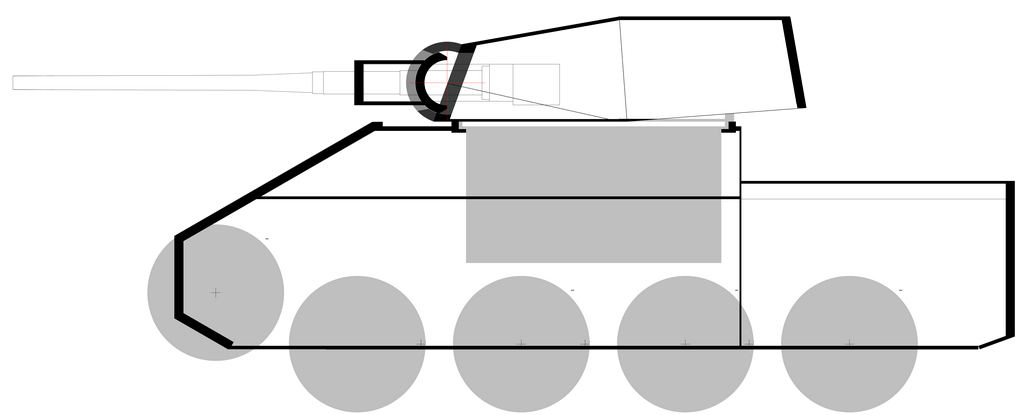
- 70/70/90 HP
- 105/140/26 mm
- 50 mm
- 100 hp
Less known tank project from 1944. It was inspired by success of T-34 so it had similar armor layont. Being smaller and lighter, 15t tank seems to look like a BT Soviet tank, but totally different by stats.
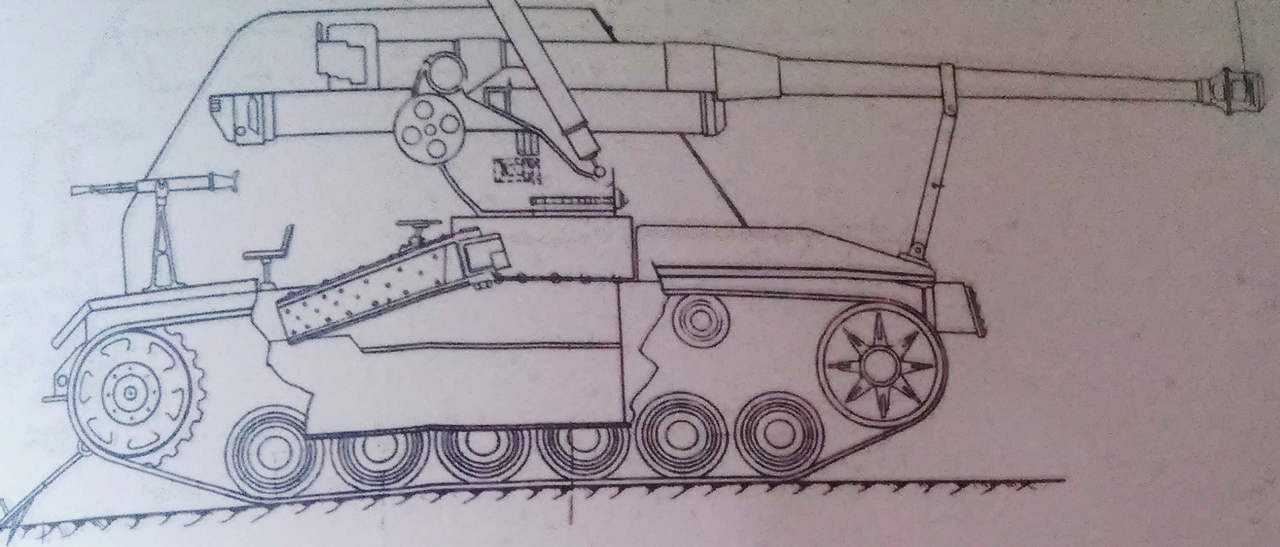
Notice that it has an open top (and rear I suppose)
- 220/220/270 HP
- 145/194/44 mm
- 300 hp
This project is a part of the StuG III upgunning program. Its main gun was the 88 mm KwK 36 L/56 which was very common in Spanish army and cheap. There were plans to start mass production of this SPG, but only a single prototype was built.

The Tipo B (this is a fictional designation) had a mounted backwards barrel making it an interesting SPG for playing.

- 440 HP
- 30 mm
- 300 hp
- 300 hp
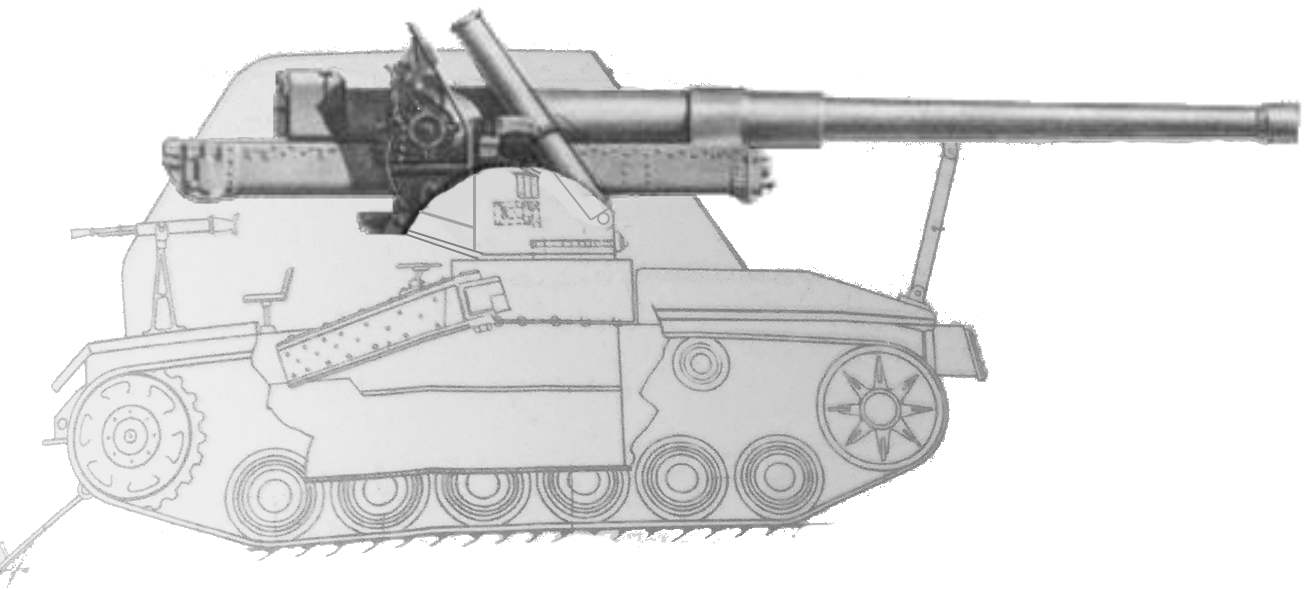
Project of re-arming StuG III with 105 mm L/26 howitzer. The barrel was mounted backwards (as on British Archer and Crusader SP) but the transmission didn't change, so it could go back at full speed. Didn't leave a project stage.
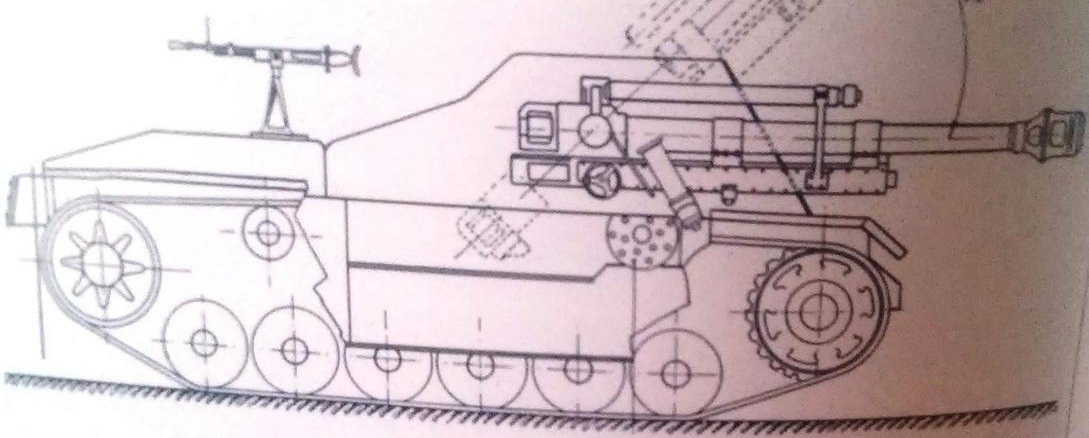
The Tipo A had a gun moounted on the back of the vehicle.
- 440 HP
- 30 mm
- 300 hp
The original design of the Assault Batteries program. The assembly of a R-43 Naval Reinosa gun of 105/26 m was devised. To do this, the entire upper part of the StuG III chassis was removed. Because it occupied little space, it still had a machine gun in the back. The cannon, for its part, had a vertical shot angle of 45 °. In general, the Type A presents a low aerodynamic silhouette, which helps to diminish the possibility of receiving enemy impacts. Some sources say a prototype was built in 1950's, armed with 105 mm leFH 18 howitzer.


- 500 HP
- 35 mm
- 300 hp
- 300 hp
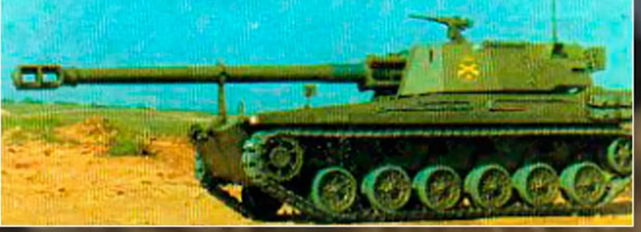
In 1940, after the arrival of 10 StuG III units, the Spanish Army made a subdivision called the Artillery Experimental Assault Battery, based in Carabanchel. This subdivision had to experiment with the 10 antitank Germans to develop some type of self-propelled artillery, with the purpose of to modernize the Spanish armored park. Infinite planes and studies were made, but only one model was built: the self-propelled 122/46 mm. The prototype was based on the design of a SPG with a 88 mm gun, but in this case it carried a much more powerful canon: a 122 mm L/46 barrel. A single unit was built in Carabanchel, with the peculiarity of carrying a wooden cannon, to study the viability of the car before constructing the definitive prototype. After the tests, it was deposited in the EATA Carabanchel, and its final destination is not known.


- 700/700 HP
- 40/40 mm
- 912 hp
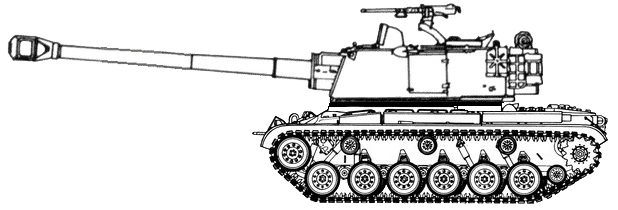
The only prototype of "San Carlos" was built in the late 70's. It's based on M113 chassis, so the armor can only withstand 20 mm shells. But it had some problems with reliability, and that's why Spanish army bought American M109's instead, which were even cheaper.


- 700/700 HP
- 40/40 mm
- 908 hp
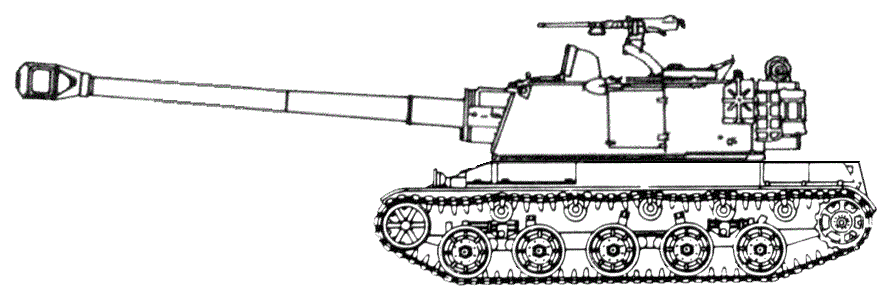
It was a project that did not leave the paper and consisted of using the chassis of an M-47 along with a 155mm L/39 howitzer. It would have a turret with 360º rotation.


- 700/700 HP
- 40/40 mm
- 912 hp
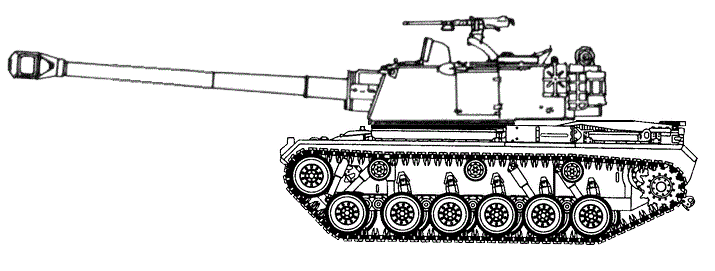
This is a project of mounting the 155 mm howitzer on AMX-30 chassis in a turret. No prototypes were built.


- 750/750 HP
- 50/50 mm
- 908 hp
Artillery project on the chassis of M47E - Spanish modernized Patton. It also got more powerful howitzer in a turret. It wasn't ever built.


- 135/135/175 HP
- 130/170/38 mm
- 50 mm

It was supposed to be the Spanish T-34 "replica" - sloped armor, overall arrangement. At the same time it was going to be slow as a heavy tank. It's a project from 1944.


- 110/110/175 HP
- 100/140/38 mm
- 135/135/175 HP
- 160/200/38 mm

A further development of Verdeja tank dated 1942-43. It was supposed to be like a mix of Verdeja II and Soviet T-34. But the project was abandonned because Verdeja II cound not even go into mass production.


- 150/150/185 HP
- 150/210/38 mm
- 25/25/25 mm
- 400 hp
- 450 hp
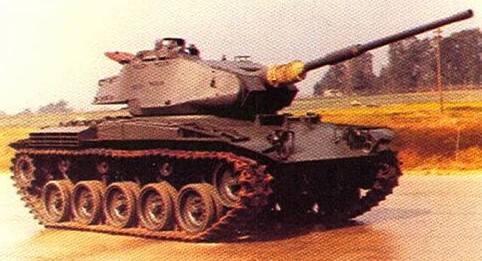
M41 modified by the Spanish Army with a new diesel engine; this increases the tank's range to about 483 km (300 miles). Also the new equipment was installed: rangefinders, driving camera ect.


- 95/95/115 HP
- 230/250/30 mm
- 25/25/25 mm
- 500 hp
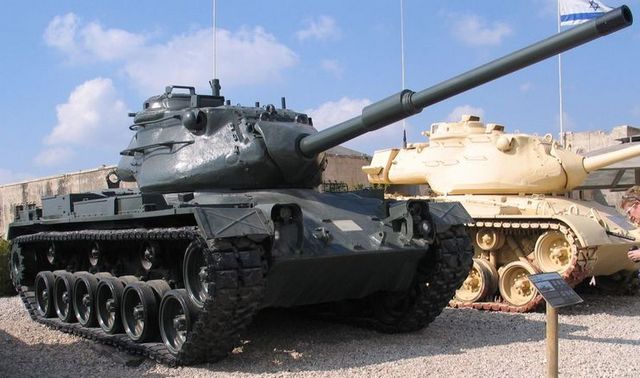

Spanish M41E upgraded with Israeli 60 mm HVMS gun. The only prototype was built in 1988. It also got some new tech upgrades, sideskirts and an engine from M2 Bradley.


- 240/240/320 HP
- 172/262/45 mm
- 390/390/480 HP
- 268/330/53 mm
- 102/64/76 mm
- 102/64/76 mm
- 750 hp

M47E – Spanish M47M austere version (kept original FCS).
M47E1 – Second Spanish upgrade batch with rearranged main gun ammunition storage and crew heater. Both new and upgraded M47Es. 330 converted.
M47E2 – 45 built. M47E1 with Rh-105 105 mm gun and improved FCS (still electromechanical). Passive night vision for driver and commander. All M47 series MBT in Spanish service retired 1993.


- 390/390/480 HP
- 248/300/53 mm
- 80/35/30 mm
- 830 hp
LEOX prototype is an unique tank which actually was Leopard 1 with AMX-30 turret. Only the hull of Leopard was prepared for installation, but then it was only used for training tank drivers.


- 390/390/480 HP
- 248/300/53 mm
- 80/35/30 mm
- 690 hp
- 720 hp
- 750 hp
- 750 hp
- 800 hp
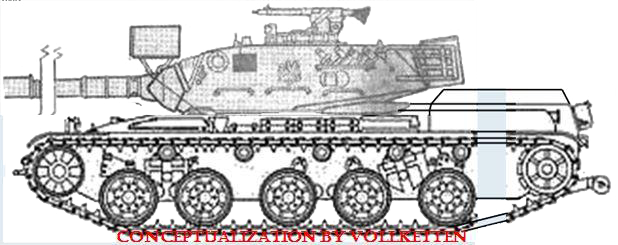
Starting with ~1970 when Spain bought 19 (first 6 delivered in November 1970) AMX-30 tanks from France to replace their ageing fleet of US tanks like the M.41 and M.47. The US and UK had suspended sales of equipment to Spain for political reasons and – as the gun on the Leopard 1 was British – the Germans couldn’t sell the Leopard to Spain at the time. So, Spain had basically had a choice of either the AMX-30 or Leopard 1 and then been forced to take the AMX-30 by the Leopard 1 being unavailable. To say they were renowned for reliability would be a mistake, basically they were terrible, horrible breakdowns and maintenance to such an extent that they not only started to improve the old and ‘replaced’ fleet of M47 and M48 tanks, but with modifications to improve the AMX-30, which in turn led to the Lince tank project. There were 9 different prototypes (from P-001 to P-009) with different engines and transmissions.
P-001 made by Chrysler-Spain in Toledo: hull lengthened by 300mm; hull height increased (not known by exactly how much) at the back by enough that when the turret was turned to the rear the gun could not even depress to zero degrees; fitted with a Continental AVDS-1790-2D engine producing 750 hp combined with an automatic Allinson CD-850-6A gearbox. The same hull is used for all the rest versions.
P-002 fitted with an MTU MB-833 Ka-500 6 cylinder water cooled engine producing 750 hp.
P-003 fitted with a Hispano-Suiza HS-110 engine producing 720hp combined with an Allison CD-850-6A transmission.
P-005 fitted the 720hp Hispano-Suiza HS-110 engine but using a RENK RK-304 transmission.
P-009 – two prototypes produced: first has a new hatch for the loader and a mounting for a Browning machine gun, second fitted with a General Motor GM 124-71 OTA water cooled 800 hp engine combined with an Allison model CD-850-6B transmission.

This prototype uses the hull of the AMX-30 mounting the turret of a Leopard 1. Seems to be the most interesting of the AMX-30 P-series (prototypes).

- 390/390/480 HP
- 268/330/53 mm
- 720 hp
Starting with ~1970 when Spain bought 19 (first 6 delivered in November 1970) AMX-30 tanks from France to replace their ageing fleet of US tanks like the M.41 and M.47. The US and UK had suspended sales of equipment to Spain for political reasons and – as the gun on the Leopard 1 was British – the Germans couldn’t sell the Leopard to Spain at the time. So, Spain had basically had a choice of either the AMX-30 or Leopard 1 and then been forced to take the AMX-30 by the Leopard 1 being unavailable. To say they were renowned for reliability would be a mistake, basically they were terrible, horrible breakdowns and maintenance to such an extent that they not only started to improve the old and ‘replaced’ fleet of M47 and M48 tanks, but with modifications to improve the AMX-30, which in turn led to the Lince tank project. There were 9 different prototypes (from P-001 to P-009) with different engines and transmissions.
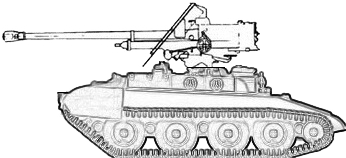
It's not clearly known what that 76 mm gun is, but I suppose it is M32 from the M41 tank.
- 170/170/260 HP
- 175/210/38 mm
- 200 hp
M56 Scorpion was in Spanish service. What is more, there was a version with 76 mm gun (not known if it was built) because Spanish Army thought that 90 mm gun had too high recoil.